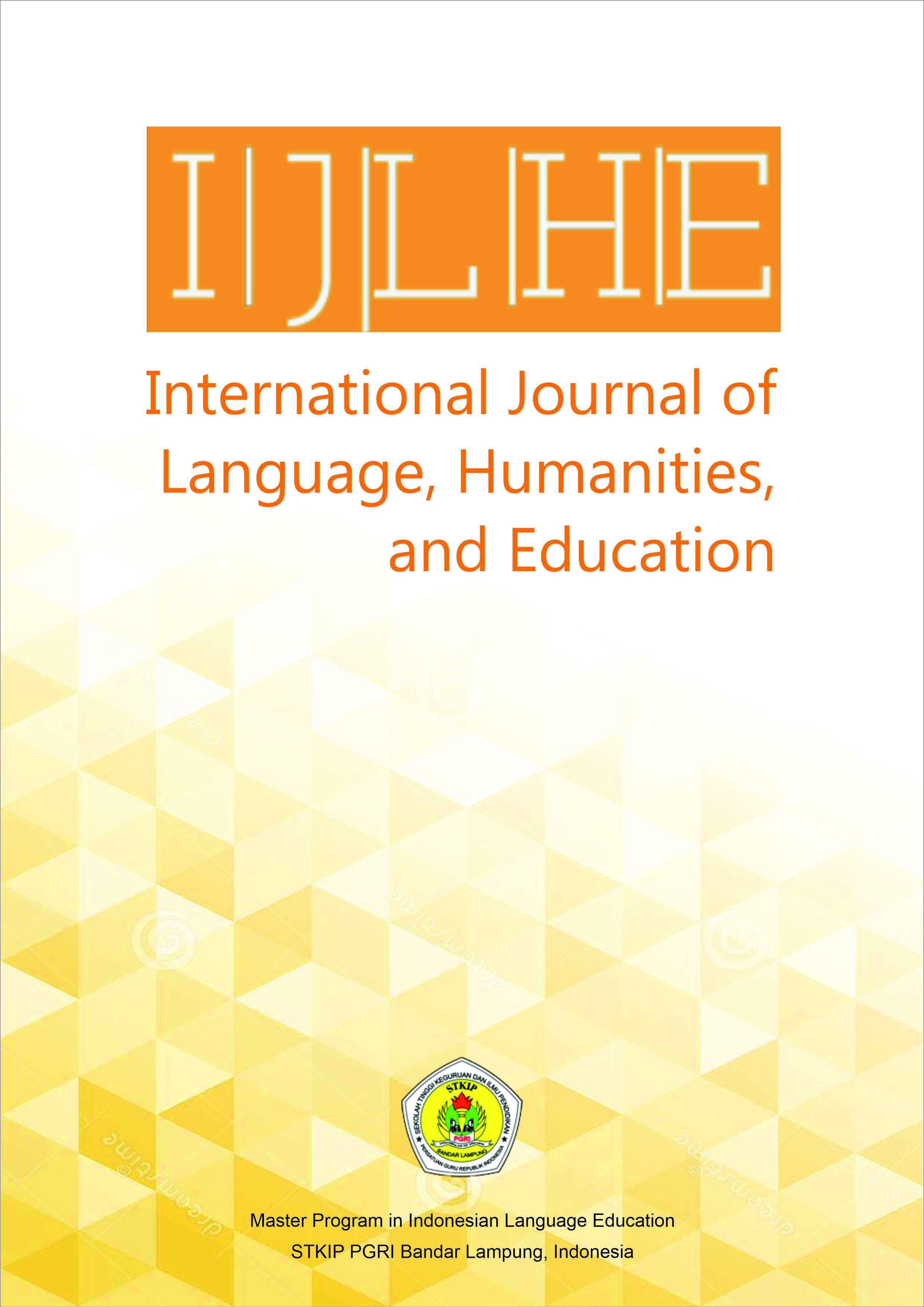Zooming into Engagement: Exploring Cognitive, Behavioral, and Emotional Dynamics in EFL Writing Classes
DOI:
https://doi.org/10.52217/ijlhe.v7i2.1683Keywords:
behavioral engagement, cognitive engagement, emotional engagement, EFL writing classes, video conferencingAbstract
The transition to online learning during the COVID-19 pandemic brought significant challenges to maintaining student engagement, particularly in video conferencing-based EFL writing classes. While prior research has highlighted the potential of platforms like Zoom for synchronous learning, studies focusing on the dimensions of cognitive, behavioral, and emotional engagement in writing courses remain limited. This study aims to measure the levels of student engagement in video conferencing-based EFL writing classes and identify strategies to enhance engagement across these dimensions. Employing a mixed-method approach, the study involved 40 English Education undergraduate students at UIN Raden Intan Lampung, selected through purposive sampling. Quantitative data were collected using a questionnaire with 30 items measuring engagement dimensions, distributed via Google Forms. Qualitative data were obtained from semi-structured face-to-face interviews with 10 purposively selected participants. The questionnaire data were analyzed using SPSS for descriptive and inferential statistics, while thematic analysis was applied to the interview transcripts. The findings reveal high levels of cognitive engagement, with students actively participating in writing tasks facilitated by Zoom’s interactive features. However, behavioral engagement was moderate due to external challenges like connectivity issues and environmental distractions. Emotional engagement ranged from moderate to high, with students appreciating the platform's flexibility but occasionally experiencing feelings of isolation. The study highlights the need for integrating gamification, structured feedback, and hybrid learning models to address these challenges.
References
Aini, Z., Muslem, A., & Marhaban, S. (2021). Investigating students’ motivation and problems toward the use of Zoom platform in English teaching and learning process during the Covid-19 pandemic. English Education Journal, 12(4), 613–630. https://doi.org/10.24815/EEJ.V12I4.21213
Alfadda, H. A., & Mahdi, H. S. (2021). Measuring students’ use of Zoom application in language course based on the Technology Acceptance Model. Journal of Psycholinguistic Research, 50(4), 883–900. https://doi.org/10.1007/S10936-020-09752-1
Al-Obaydi, L. H., Shakki, F., Tawafak, R. M., Pikhart, M., & Ugla, R. L. (2023). What I know, what I want to know, what I learned: Activating EFL college students’ cognitive, behavioral, and emotional engagement through structured feedback in an online environment. Frontiers in Psychology, 13, 1083673. https://doi.org/10.3389/FPSYG.2022.1083673/BIBTEX
Bitrián, P., Buil, I., & Catalán, S. (2021). Enhancing user engagement: The role of gamification in mobile apps. Journal of Business Research, 132, 170–185. https://doi.org/10.1016/j.jbusres.2021.04.028
Braun, V., & Clarke, V. (2006). Using thematic analysis in psychology. Qualitative Research in Psychology, 3(2), 77–101. https://doi.org/10.1191/1478088706qp063oa
Chamran, S., Nurieva, G. R., & Garaeva, L. M. (2021). Students’ Perception on The Use of English Subtitle on Zoom during Online Learning Process. JELLT (Journal of English Language and Language Teaching), 5(2), 31–44. https://doi.org/10.36597/JELLT.V5I2.11419
Cheung, A. (2021). Language teaching during a pandemic: A case study of Zoom use by a secondary ESL teacher in Hong Kong. RELC Journal, 54(1), 55–70. https://doi.org/10.1177/0033688220981784
Hastomo, T. (2021). Video conferences in teaching EFL: A case study of using Zoom. Lentera: Jurnal Ilmiah Kependidikan, 14(1), 125–132. https://doi.org/10.52217/LENTERA.V14I1.830
Hastomo, T., & Septiyana, L. (2022). The investigation of students’ engagement in online class during pandemic COVID-19. Jurnal Penelitian Ilmu Pendidikan, 15(2). https://doi.org/10.21831/JPIPFIP.V15I2.49512
Hastomo, T., & Zulianti, H. (2022). The integration of the KWL (Know, Want, Learn) strategy and the Zoom conference in teaching reading: An action research. Linguists : Journal Of Linguistics and Language Teaching, 8(1), 55–66. https://doi.org/10.29300/LING.V8I1.6574
Ivankova, N. V., Creswell, J. W., & Stick, S. L. (2006). Using mixed-methods sequential explanatory design: From theory to practice. Field Methods, 18(1), 3–20. https://doi.org/10.1177/1525822X05282260
Maekawa, Y. (2021). Creating an interactive Zoom English class for university students during COVID-19 and students’ reactions. LET Kansai Chapter Collected Papers, 19, 41–58. https://doi.org/10.50924/LETKANSAI.19.0_41
Mpungose, C. B. (2021). Lecturers’ reflections on use of Zoom video conferencing technology for e-learning at a South African university in the context of coronavirus. African Identities, 21(2), 266–282. https://doi.org/10.1080/14725843.2021.1902268
Oktarin, I. B., Saputri, M. E. E., Magdalena, B., Hastomo, T., & Maximilian, A. (2024). Leveraging ChatGPT to enhance students’ writing skills, engagement, and feedback literacy. Edelweiss Applied Science and Technology, 8(4), 2306–2319. https://doi.org/10.55214/25768484.v8i4.1600
Pratiwi, R. (2022). The effect of using Zoom towards online English teaching and learning process in the post-pandemic era. Edukatif : Jurnal Ilmu Pendidikan, 4(4), 5272–5281. https://doi.org/10.31004/EDUKATIF.V4I4.2962
Raake, A., Fiedler, M., Schoenenberg, K., De Moor, K., & Döring, N. (2022). Technological Factors Influencing Videoconferencing and Zoom Fatigue. https://doi.org/10.48550/arxiv.2202.01740
Shah, R. K., & Barkas, L. A. (2018). Analysing the impact of e-learning technology on students’ engagement, attendance and performance. Research in Learning Technology, 26. https://doi.org/10.25304/RLT.V26.2070
Singh, C. K. S., Singh, T. S. M., Abdullah, N. Y., Moneyam, S., Ismail, M. R., Eng Tek, O., Karupayah, T., Chenderan, K., Singh, M. K. R., & Singh, J. K. S. (2020). Rethinking English language teaching through Telegram, WhatsApp, Google Classroom, and Zoom. Systematic Reviews in Pharmacy, 11(11), 45–54. https://doi.org/10.31838/SRP.2020.11.9
Suadi, S. (2021). Students’ perceptions of the use of Zoom and WhatsApp in ELT amidst COVID-19 pandemic. SALEE: Study of Applied Linguistics and English Education, 2(1), 51–64. https://doi.org/10.35961/SALEE.V2I01.212














